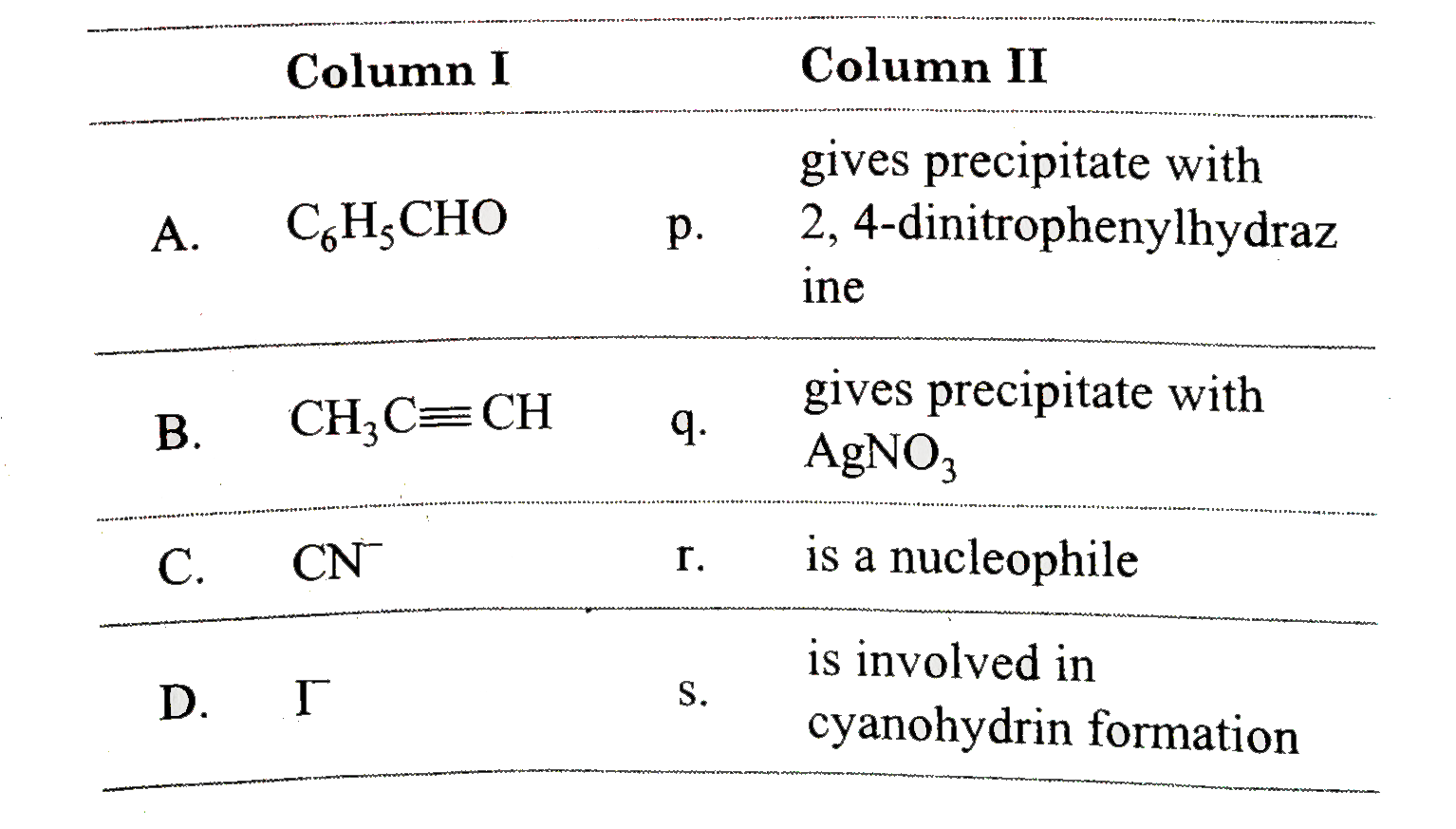Match the compounds/ions in Column I with their properties/reactions in Column II.
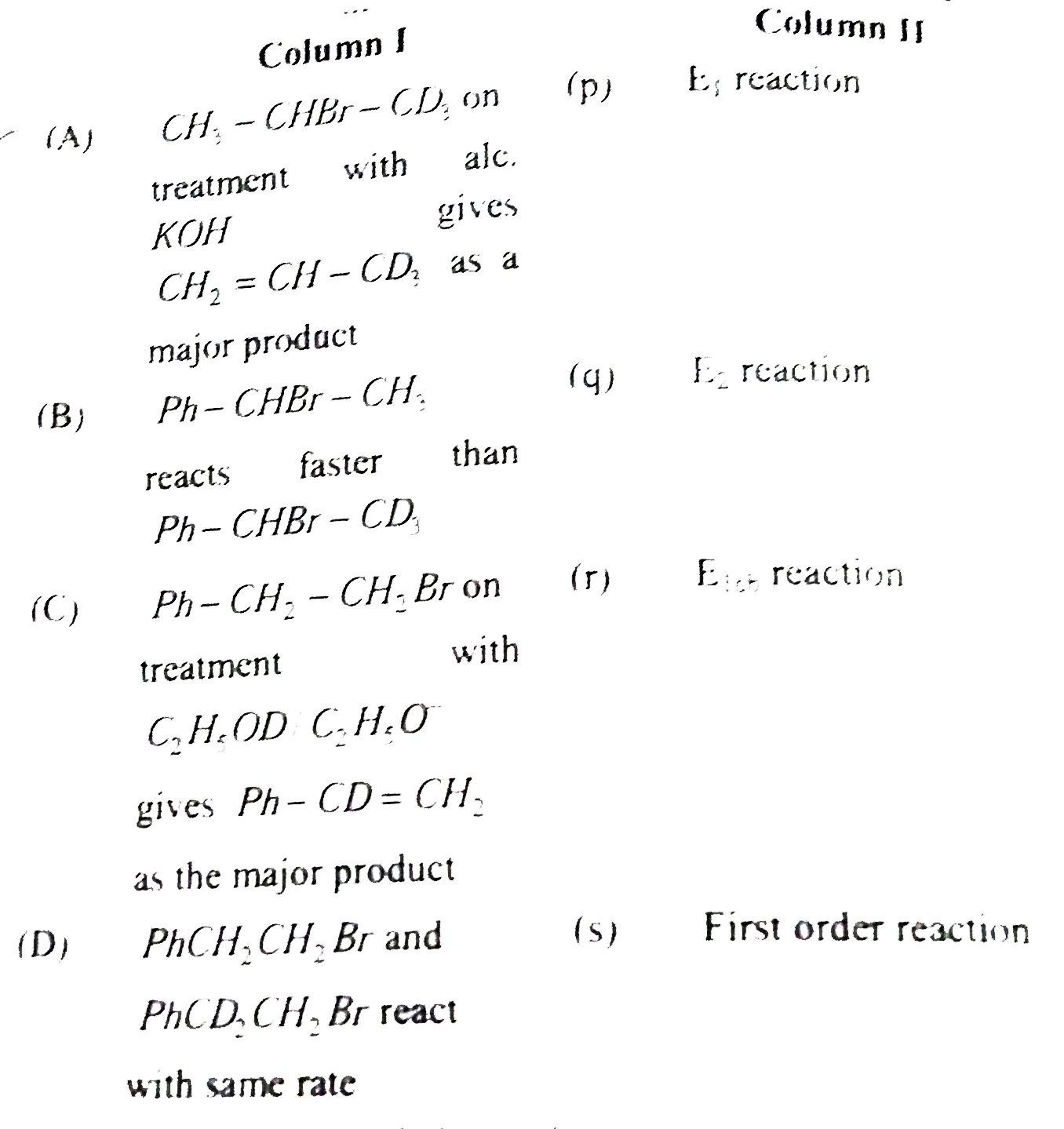
Text Solution
The correct Answer is:A→q;B→q;C→r;s;D→p,s
(A) In E2-reaction CH3−CH(Br)C−D3 gives
CH2=CH−CD3 ltbr> CH3−CH∣Br−CD3Alcoh. KOH−−−−−−→Boil
CH2=CH−CD3+KBr+H2O
The formation of CH2=CH−CD3 can be explained on the basis of the fact that. C-D bond is much stronger than C-H bond.
(B) Reactivity of PhCHBrCH3 is greater than PhCHBrCD3 because C-D bond is more stronger than C-H bond.
(C) 
In the step (II), a slow unimolecular elimination occurs in the conjugate base of the reactant and hence this mechanism is called E1cb or carbanion mechanism. Since step (I) must be reversible, if ethanol containing C2H5OD is used as solvent, it would be expected that the original bromide would incorporate deuterium (D).
(D) Step I. PhCH2−CH2−Brslow−−→PhCH2−+CH2+Br−
Step II. PhCH2−+CH2Fast−−→Ph−CH=CH2+H+
Rate ∝[PhCH2−CH2−Br] Similarly
Step I. PhCD2CH2BrSlow−−→PhCD2+CH2+Br−
Step II. PhCD2+CH2Fast−−→PhCD=CHD+H+
Rate ∝[PhCD2−CH2Br]
Hence, E1 reaction and first order kinetics.
|
Topper's Solved these Questions
- GENERAL ORGANIC CHEMISTRYBook:ERRORLESS Chapter:GENERAL ORGANIC CHEMISTRYExercise:Integer type questions
Explore 15 Videos
- GASEOUS STATE Book:ERRORLESS Chapter:GASEOUS STATE Exercise:JEE SECTION JEE (Advanced) 2018 Numeric answer type question
Explore 1 Video
- HALOGEN CONTAINING COMPOUNDBook:ERRORLESS Chapter:HALOGEN CONTAINING COMPOUNDExercise:Critical Thinking (Jee (Advanced) 2018)
Explore 1 Video
Similar Questions
Knowledge Check
Match the complexes in Column I with their properties listed in Column II
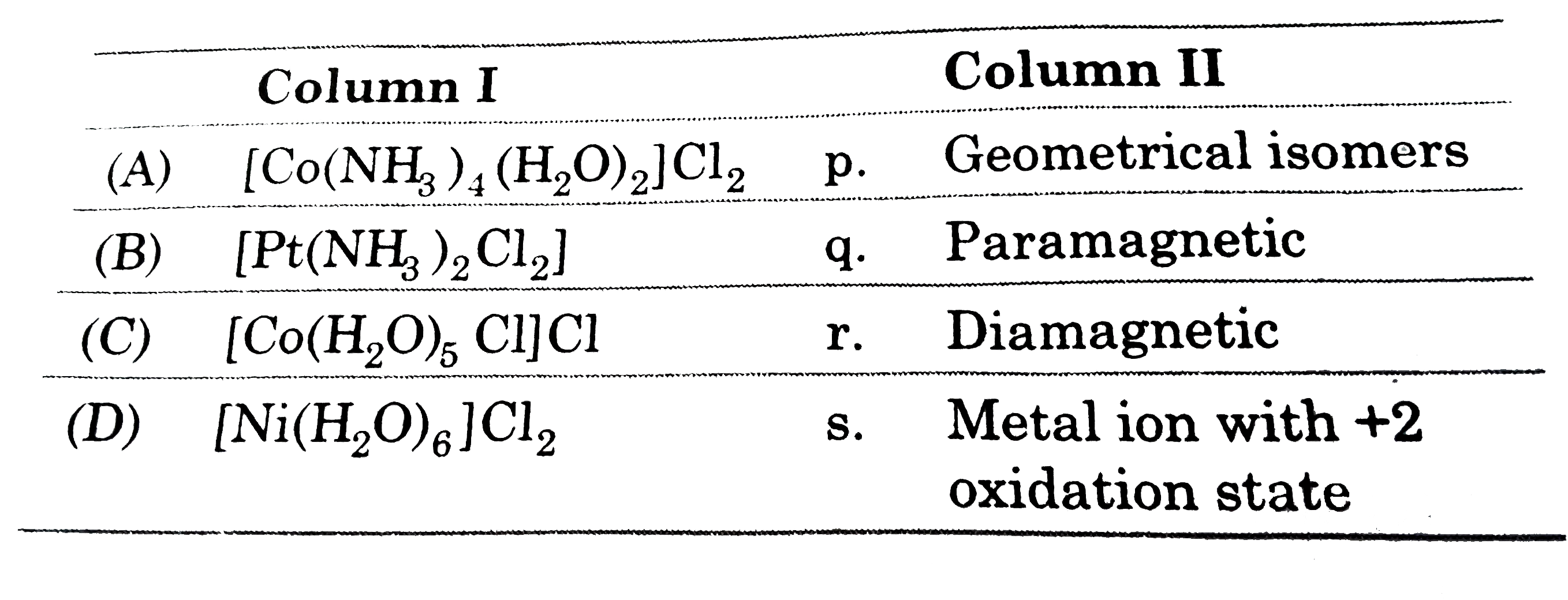 AABCD4231BABCD3142CABCD2134DABCD1342
AABCD4231BABCD3142CABCD2134DABCD1342
Match the compounds// ions in Column- 1 with their properties in Column -2

View SolutionMatch the compounds given in Column I with their uses mentioned in Column II.
 .
.
View SolutionMatch the elements given in column I with the properties mentioned in Column II.

View SolutionMatch the functions in Column I with the properties Column II.
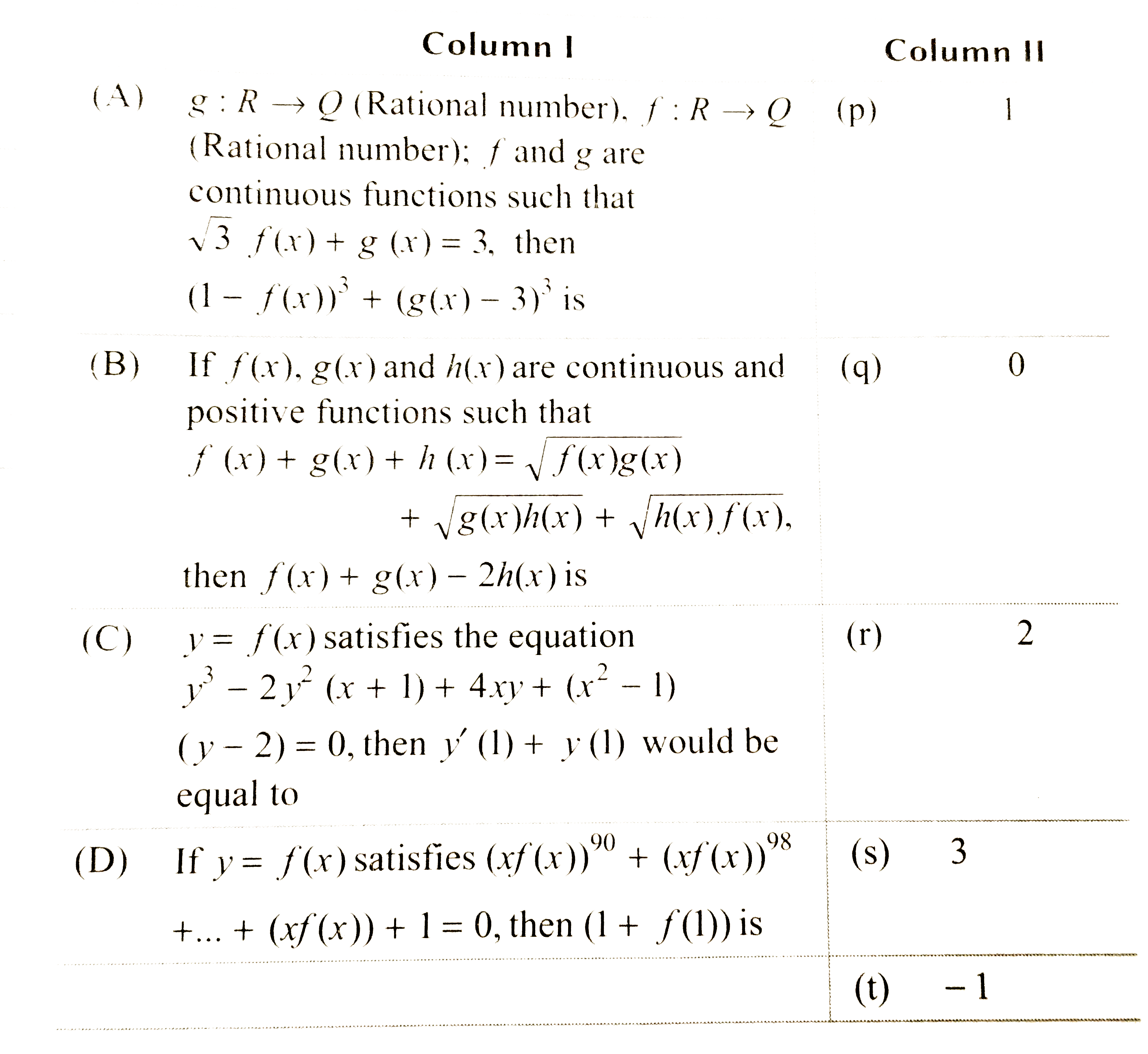
View SolutionMatch the complexes in Column-I with their properties listed in Column-II

View SolutionMatch the complexes in Column-I with their properties listed in Column-II

View SolutionMatch the reactions given in Column I with the type of reactions given in Column II
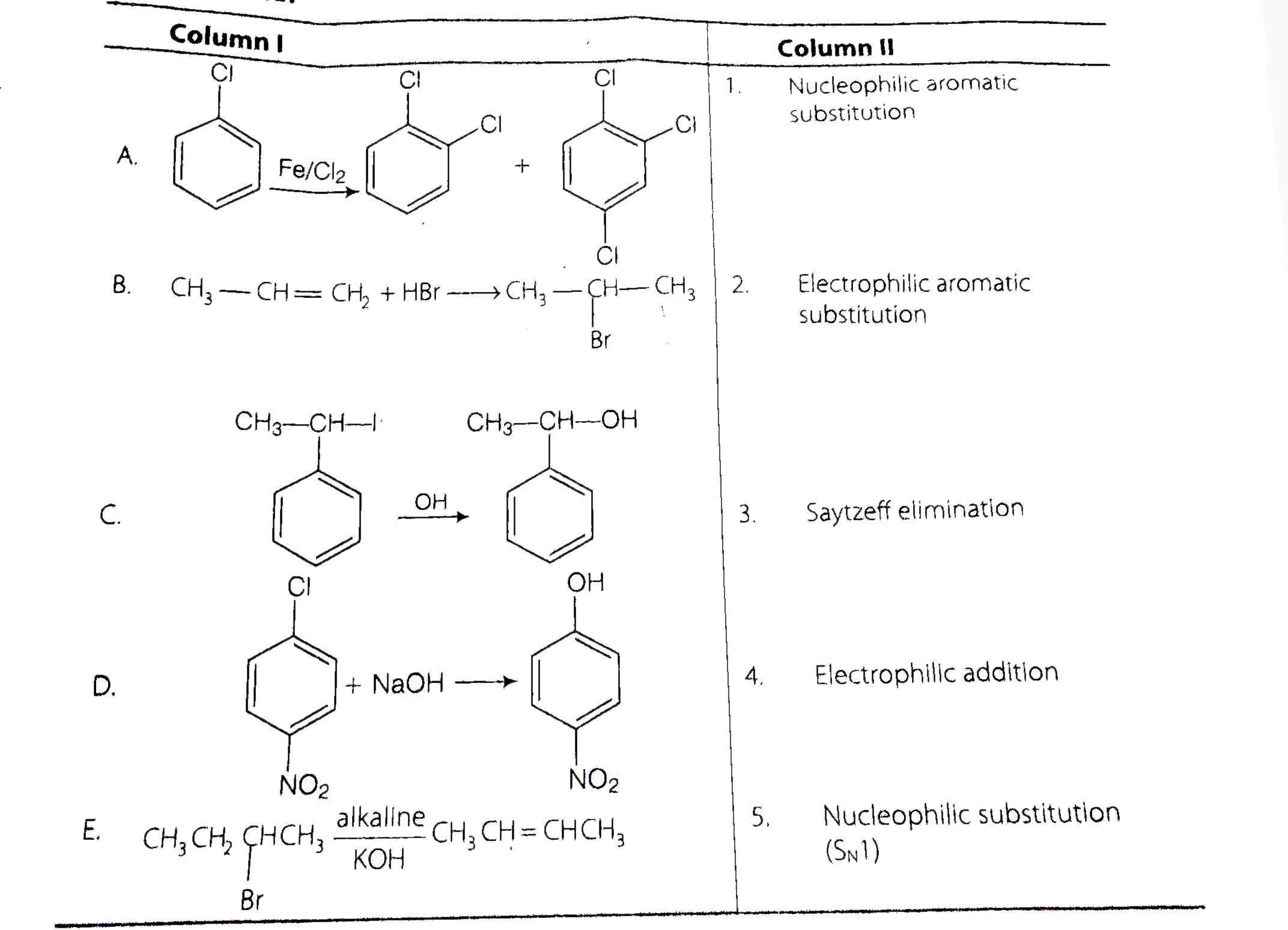
View Solution



